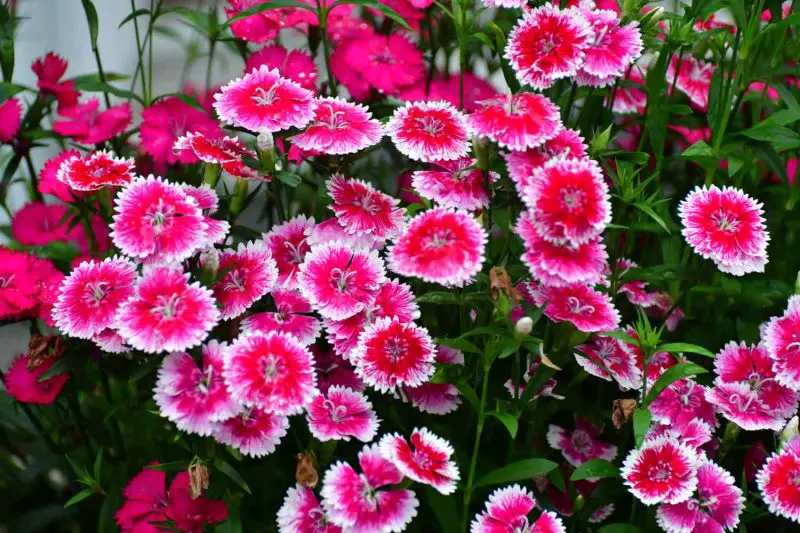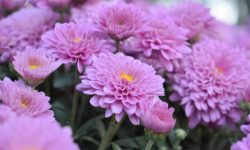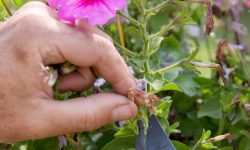Dianthus, commonly known as pinks, carnations, or sweet williams, are popular flowering plants celebrated for their frilled petals, spicy fragrance, and long-lasting blooms. These cheerful plants can be grown in containers, borders, or rock gardens and are prized for their ability to bloom profusely throughout the growing season. However, to keep them producing new flowers continuously, one essential gardening technique must not be overlooked: deadheading.
Deadheading dianthus is more than just removing spent blooms; it’s a strategic and rewarding practice that encourages fresh growth, prevents seed production, and maintains the plant’s vibrant appearance. Whether you’re new to gardening or a seasoned grower, understanding how to deadhead dianthus the right way can significantly improve your plant’s performance.
Understanding the Importance of Deadheading Dianthus

Deadheading plays a pivotal role in the life cycle of a flowering plant. For dianthus, this practice signals the plant to divert its energy from seed production back into creating new blooms. When flowers fade and are left on the plant, they begin to go to seed. This natural process is the plant’s way of reproducing, but it often marks the end of blooming. By interrupting this cycle through deadheading, gardeners trick the plant into continuing its flowering phase.
This technique is particularly important for repeat-blooming varieties of dianthus. Without regular deadheading, these plants may stop flowering early in the season, resulting in fewer blossoms and a less striking garden display. Additionally, removing old blooms keeps the plant looking tidy and can help prevent the development of diseases associated with decaying plant matter.
When to Start Deadheading Dianthus
The timing of your deadheading efforts can have a direct impact on your plant’s productivity. Typically, dianthus begins blooming in late spring or early summer, depending on the variety and local climate. As soon as you notice the petals beginning to wilt or fade, it’s time to intervene. The earlier you remove the spent flowers, the faster the plant can refocus its energy on generating new buds.
You don’t need to wait for the entire bloom to dry out or drop its petals. A flower that has lost its vibrant color or is starting to curl at the edges is a good candidate for removal. Staying consistent with deadheading throughout the blooming season can keep your dianthus producing flowers well into fall.
Tools You’ll Need to Deadhead Dianthus
Deadheading doesn’t require a complex set of tools, but having the right equipment can make the task easier and more precise. The most important tool is a pair of clean, sharp scissors or pruning shears. These allow for neat cuts that minimize damage to the plant’s stems and reduce the risk of introducing pathogens.
Gloves can also be helpful, especially when dealing with varieties that grow densely or have stiff foliage. Additionally, a small collection container for discarded blooms can keep your workspace tidy and prevent spent flowers from dropping to the ground and creating clutter or attracting pests.
How to Identify Spent Blooms on Dianthus
Recognizing when a flower has finished blooming is key to effective deadheading. Spent dianthus flowers typically lose their vivid hue, appear dried or curled, and may begin to droop. In some cases, you might also notice the development of a seed capsule at the base of the bloom, which is a clear indicator that the flower is past its peak.
It’s important not to confuse healthy buds with old flowers. New buds are firm, usually closed or partially open, and appear vibrant and green at the base. In contrast, spent blooms may feel papery or discolored and are often accompanied by browning leaves or stalks. With a little practice, identifying what to remove becomes second nature.
Where to Cut When Deadheading Dianthus
The location of your cut can influence how the plant responds and how quickly it recovers. The best practice is to cut just above the first set of healthy leaves or a lateral bud on the flowering stem. This encourages side shoots to develop, which can lead to more flowering stems and increase overall bloom production.
Avoid cutting too close to the crown of the plant, as this can damage important growing points. Likewise, leaving too much of the spent stem can create a scraggly appearance. A clean, angled cut just above a node will facilitate quick healing and minimize stress on the plant.
Frequency of Deadheading for Maximum Blooms
Consistency is the key to success when it comes to deadheading dianthus. Depending on the growth rate and environmental conditions, you may find yourself deadheading every few days during peak bloom times. This might sound like a lot of work, but the payoff is a continuously blooming plant that brings color and fragrance to your garden for months on end.
It’s helpful to walk through your garden regularly and observe the plants. Taking a few minutes every few days to remove faded blooms can keep the task from becoming overwhelming. Plus, regular monitoring allows you to spot any potential issues early, such as pests or fungal infections.
Benefits Beyond More Blooms
While the primary goal of deadheading dianthus is to encourage more flowers, the benefits don’t stop there. Removing old flowers can also help prevent fungal diseases like botrytis, which thrives in decaying plant matter. This is especially important in humid or rainy climates where wet petals can quickly become breeding grounds for harmful pathogens.
Additionally, deadheading enhances the overall aesthetic of your garden. A bed full of bright, tidy blooms looks far more attractive than one dotted with wilted, browning flowers. If you’re growing dianthus for cut flowers, consistent deadheading also helps produce longer, straighter stems that are ideal for arrangements.
Caring for Dianthus After Deadheading
After you’ve removed the spent flowers, it’s a good idea to give your plant a little extra care to support new growth. Watering at the base of the plant helps maintain moisture levels without wetting the leaves, which can promote disease. Applying a balanced fertilizer after a major deadheading session can also boost nutrient levels and encourage vigorous blooming.
Keep an eye on the plant’s overall health during this time. If you notice yellowing leaves or stunted growth, it might indicate a need for additional nutrients or better drainage. Healthy dianthus plants should exhibit strong green foliage, upright stems, and a steady progression of buds throughout the season.
Differences Between Annual and Perennial Dianthus
Understanding the type of dianthus you’re growing can influence your deadheading strategy. Annual varieties, such as Dianthus chinensis, complete their life cycle in one growing season and benefit greatly from continuous deadheading to maximize their blooming period. Since these plants won’t return next year, the goal is to keep them flowering as long as possible.
Perennial types, including Dianthus gratianopolitanus and Dianthus deltoides, come back year after year and often have a more compact growth habit. While they also benefit from deadheading, you may choose to let a few flowers go to seed at the end of the season to encourage natural reseeding or simply allow the plant to rest.
Dealing with Large Clumps of Dianthus
In mature gardens, dianthus can form dense clumps that produce hundreds of blooms at once. While beautiful, these can be more difficult to manage when it comes to deadheading. For larger plantings, consider a technique called shearing. This involves cutting back the top few inches of the plant uniformly after the first major flush of blooms has faded.
Shearing is a faster alternative to individual deadheading and can rejuvenate the entire plant. Within a few weeks, new buds typically appear, and the plant begins to flower again. This method is particularly useful in midseason and helps maintain a neat, mounded shape.
Combining Deadheading with Other Maintenance Tasks
Deadheading doesn’t need to be a stand-alone activity. You can incorporate it into a broader routine that includes weeding, watering, and inspecting your plants. This approach not only saves time but also ensures that your garden remains healthy and vibrant throughout the season.
During your maintenance rounds, look for signs of insect activity or disease. Aphids, spider mites, and caterpillars occasionally target dianthus, and early detection is the best defense. Removing affected blooms as part of your deadheading practice can help stop pests from spreading.
Deadheading in Different Climates
Climate plays a significant role in how often you’ll need to deadhead and how your dianthus responds. In cooler northern zones, dianthus may bloom less frequently but for longer periods, requiring less frequent attention. In warmer southern regions, rapid growth and repeated flowering cycles make regular deadheading more essential.
If you live in an area with high humidity, consider spacing your plants farther apart to allow for better air circulation. This helps prevent mildew and fungal issues, which can be exacerbated by frequent rainfall and tightly packed foliage.
End-of-Season Deadheading Tips
As the growing season winds down in late summer or early fall, your approach to deadheading may change. For annuals, continue removing blooms until the plant naturally begins to decline. For perennials, consider letting some of the final blooms go to seed if you want the plant to reseed naturally or provide food for wildlife.
Cutting back the entire plant after the final flush of flowers can help prepare it for overwintering. Trim the stems to just a few inches above the ground and apply a layer of mulch around the base to protect the roots from frost. This ensures a strong return in the following spring.
Encouraging Year-Round Garden Beauty
While dianthus shines brightest in spring and summer, strategic deadheading and proper care can help it contribute beauty to your garden almost year-round in milder climates. Pairing dianthus with other complementary plants that bloom at different times can create a continuous wave of color and texture in your landscape.
By mastering the art of deadheading, you’re not just maintaining your plants—you’re maximizing their potential. The reward is a garden that bursts with color and fragrance from early summer to late fall, filled with the cheerful presence of dianthus blooms.
FAQs About Deadheading Dianthus
What is deadheading, and why is it important for dianthus?
Deadheading is the practice of removing spent or faded flowers from a plant to encourage it to produce more blooms. For dianthus, deadheading is essential because it redirects the plant’s energy away from seed production and back into flowering. This results in a longer blooming season and a healthier-looking plant overall.
How often should I deadhead my dianthus plants?
Dianthus should be deadheaded regularly throughout the blooming season. You can remove faded blooms as soon as they appear, typically every few days during peak flowering. The more consistently you deadhead, the more blooms the plant will produce.
Can I deadhead dianthus by hand, or do I need tools?
You can deadhead dianthus by hand if the blooms are easy to pinch off. However, for cleaner cuts and to prevent damage to the plant, it’s recommended to use small scissors or garden shears. Make sure your tools are sharp and sanitized before use to reduce the risk of disease.
Where exactly should I cut when deadheading dianthus?
You should cut just above the first set of healthy leaves or a lateral bud below the spent bloom. This encourages side shoots to grow and produce new flowers. Avoid cutting too close to the crown or leaving a long empty stem behind.
Will dianthus stop blooming if I don’t deadhead it?
Yes, if dianthus blooms are left to go to seed, the plant may slow down or stop producing new flowers. The plant believes its reproductive cycle is complete once seeds begin to form. Regular deadheading prevents this and keeps the blooming process active.
What should I do with dianthus at the end of the blooming season?
At the end of the season, you can either continue deadheading until the plant stops flowering or allow the final blooms to go to seed. For perennial varieties, cutting back the plant and applying mulch can help it survive the winter and regrow in spring. Annual varieties will naturally die back and should be removed after the first frost.
Is deadheading necessary for all types of dianthus?
While deadheading benefits all types of dianthus, it is especially important for repeat-blooming varieties like Dianthus chinensis and hybrid pinks. Perennial types also benefit from deadheading, though some gardeners may choose to allow limited seed formation for natural reseeding or aesthetic reasons.
Can I shear back dianthus instead of deadheading individual flowers?
Yes, shearing is a good option for large clumps of dianthus, especially after the first flush of blooms. Use clean shears to trim back the top few inches of the plant. This encourages a uniform second bloom and helps maintain a tidy, compact shape.
What are common mistakes to avoid when deadheading dianthus?
Common mistakes include cutting too close to the plant base, leaving behind long bare stems, and using dirty or dull tools. Also, removing healthy buds by accident can delay blooming, so make sure you’re only cutting faded or spent flowers.






